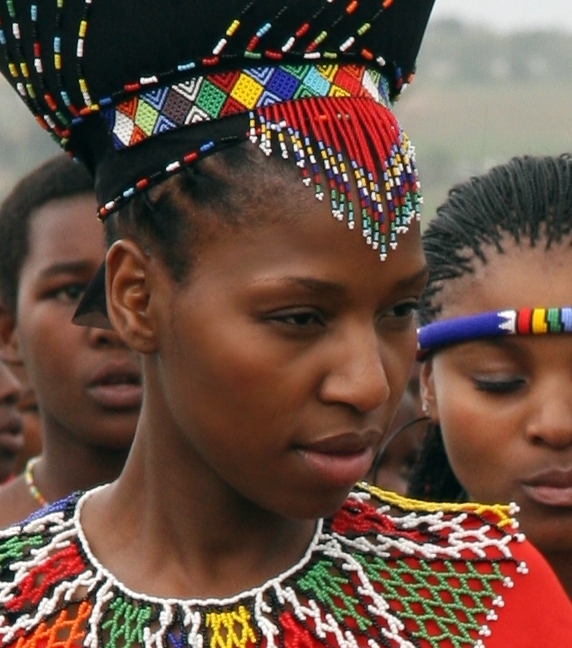There is history and tradition that connects beads and brides to each other around the globe and this is seen most dramatically through the tribal beadwork on the African continent. One of the most highly developed visual communications and languages of love is the beading of the Zulu tribes of Southern Africa, covering Swaziland and into southern Mozambique.
The Beaded Brides – Guest post by Keith Andrew

North African Bride with Metal Jewelry
Zulu beadwork has a close relationship with engagements and weddings where the bride and groom, are identified by the beaded finery they wear. The placement of the beads displays the responsibilities of the married couple… a contract. Beadwork is the exclusive domain of the Zulu women, and has become very much a “woman’s” communication (with shapes and patterns) often used in preparing brides on how to conduct themselves in relationships with young men.

A Zulu bride-to-be will make two sets of bead necklaces in matching colours, one for herself and one for her groom-to-be. Their matching colour coded necklaces and bracelets will let others know of their intentions to wed. Brides-to-be and young brides of the Zulu tribe often wear large flat topped beaded hats covering their hair. After marriage this is removed and the hair is shaped into a mud covered cone. They also wear a veil of seed beads and twisted fig leaves. It is said that a zulu bride will change her head dress (color) thrice during the ceremonies to show that she looks beautiful in a variety of colors.

Maasai Bride
Maasai women of marriageable age wear stiff flat beaded collars of seed beads. The wedding necklace consists of three elements – A head piece with beads running across the forehead and eyes, a choker around the neck and a spectacular circular necklace that spans the width of the shoulders. This will often have cowrie shells attached at the bottom as a sign of fertility. Only a married Maasai woman may wear a string of long blue beads called Nborro.
In Swaziland short beaded aprons with frilly fringes are traditionally worn by young girls. Red symbolizes fertility, white symbolizes a transition or puberty and black represents marriage and wealth. They also wear vibrant coloured thread sashes with colour coded tassels. The tassels worn will indicate whether or not the girl is betrothed.
The girls of the Guedra tribe of Northern Africa wear beads and triangular glass talismans braided in their hair to bring protection and symbolize fertility. Blue beads represent the purity of the sky, white ones for health and violet to represent a dove – the symbol of gentleness and love.

Fulani Bride, Mali
Brides from the Ndebele tribe of Southern Africa wear a beaded apron called a “liobotu”, it has two side flaps which represent the marriage partners and a fringe of small beaded tassels which symbolize the expectation of children.The tear drop beads from Czechoslovakia have become widely known as Mali wedding beads as strings of theses multi coloured beads are worn by Malian brides. However theses unusually shape beads have a traditional presence across all West Africa.
In the pic – A Fulani woman displays her bridal wealth in the form of large gold earrings and amber beads adorning her hair. She generally receives this jewelry on the death of her mother or at marriage as a dowry from her husband.
In the past seed beads weren’t just adornment for these people. To them it was the original currency or glass money which was bartered by the Africans for incense, ivory, tortoise shell, rhinoceros horn, palm and coconut oils, gold and sadly even people as slaves.
Still Bead work unites Africa… it artistically communicates cultural, religious, political and social values in a symbolic language. Bead work in various materials and designs also unites brides across continents for it is the symbol of art and love.
About the Author: Keith lives in Sri Lanka and works as a product design and development consultant for NGOs, governments and private companies.He creates amazing paper products and also conducts workshops (I met him at Abhushan, in Delhi, where he was one of the design mentors)
Special thanks to you Keith for the fascinating account of Beade Brides of Africa. The Bead work and Bridal Jewelry that is prevalent in African Tribes is amazing. It was great coordinating it with you.
I hope everybody found the post interesting
Cheers


